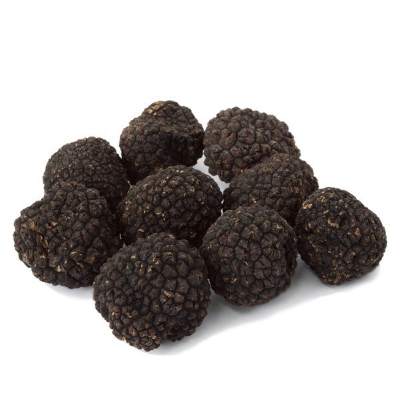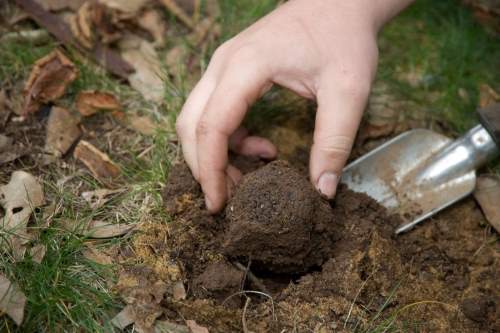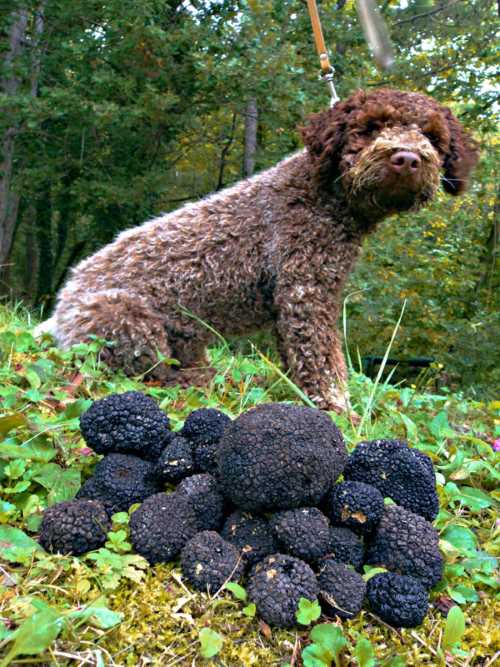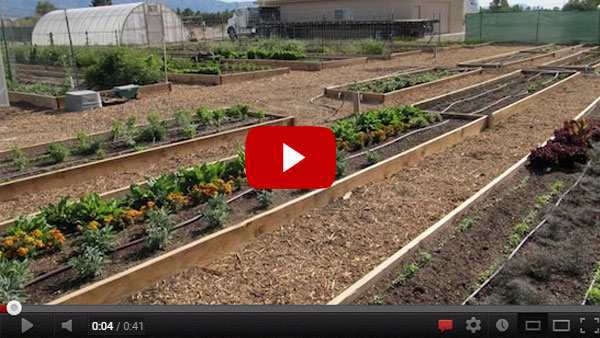Have you ever heard of a truffle?
They are very popular in European countries but are considered a delicacy among those that are very well off financially. Now, when I say truffle, I’m not talking about the chocolate kind that is made fresh at a local bakery. I’m talking about a fungus that grows in the woods like a mushroom that people absolutely adore in some cultures.

At one point, these truffles could only be grown in certain areas, but thanks to some research, farmers have learned how to produce truffles even in the United States.
So if you’d like to make an investment of time, finances, and effort with hopes of a large payout, then you may want to consider growing truffles.
Here is how you go about doing it:
What is a Truffle?

I mentioned above that truffles are a fungus that grows at the base of trees.
Actually, they form a relationship with the roots of certain trees where the truffles give the trees something they need, and the roots of the trees help the truffles to grow.
So you may be wondering what trees can actually produce a truffle. These trees can produce truffles:
- Beech
- Birch
- Hazel
- Hornbeam
- Oak
- Pine
- Poplar
You can produce white truffles or black truffles. Black truffles are not quite as ‘special’ as the white truffles. The white truffles, at one time, could only be produced in Southern Europe. Wealthy people in the area would pay around $3600 per pound of white truffles.
Or they would pay a few hundred dollars for a couple of ounces of shavings of the white truffles. As you can tell, there is money to be made.
So it didn’t take long for people to begin studying how to grow white truffles all over the world because they wanted to have a crop that could produce that type of income.
Now, years later, white truffles are still an investment but are being grown all over the world.
How to Grow Truffles

Now that you know how truffles originated, you’ll also want to know how they are produced. Here is how you can attempt to grow your own harvest of truffles:
1. Find the Right Location
To produce a nice harvest of truffles, you will need a lot of land to be able to plant the number of trees that you’ll need.
Keep in mind, you are basically planting an orchard, only the fruits are grown underground.
Also, you’ll want to consider security. Truffles are worth a lot of money so it wouldn’t be surprising to see people wondering your property to dig them up.
Therefore, you’ll want to take this into consideration as to where you plant it. You may not want to plant this orchard up next to a road is basically what I am saying.
So depending upon the acreage you have to invest in this type of orchard, this will decide for you how many trees you can actually plant.
From my own research, I’ve learned that in Europe some farmers plant around 100 trees per acre in order to keep diseases from spreading.
But then you have other farmers that pack in up to 1,000 trees per acre in order to encourage the spread of fungi which ultimately produces truffles. How many trees you plant on your acreage is totally up to you. Just realize there are both benefits and hurdles for either decision.
So once you have a secure location planned out, and you know how many trees you’d like to plant – you are ready to move on.
2. Prepare Your Soil
Truffles require a soil pH of 7.5 to 8.3. There are certain companies that you can find on the internet that will actually test your soil based specifically around growing truffles.
So if you are wanting to make sure that you start off on the right foot, then you may want to consider sending in a soil sample, or you can test your own soil with this kit.
However, if your soil has a low pH balance, you’ll need to add a lot of lime to the land over a matter of years. This will ensure that the pH is consistent.
Then once you reach the correct pH balance in the soil, you’ll need to add lime every year in order to maintain. As you can tell the proper soil pH is a big deal when growing truffles.
But you can go ahead and plant your trees while you are trying to get your soil to the right pH level. At least you can have the trees growing while you are trying to find the right balance in the whole process.
3. Plan Your Irrigation System
Next, you’ll need to plan an irrigation system. As you can tell, growing truffles is not an overnight success story. It takes lots of time and effort to make them produce.
But watering is one of the things that causes people to give up so soon because they require so much water.
Basically, you are growing an orchard. One tree needs about an inch of water a week. If you are growing 100 trees, then you need 1 inch of water per tree per week. That is a lot of water.
So you’ll need an irrigation system that will make watering your trees easier, efficient, and effective.
Then if you can make sure that the soil is staying at the right pH, and the trees are given the right amount of water, you’ll be over two of the largest hurdles of growing your own truffles.
4. Plant and Care for the Trees
The next step is to plant the trees and care for them. The planting part is pretty extensive because planting 10 trees is a lot of work. I can’t imagine how back breaking it could be to plant 100 or even 1,000 trees.
So be sure that physically you are up for it before you take on this task.
Then you’ll need to be sure that your trees are watered properly, have lime applied to the soil for maintenance, trim your trees, weed between the trees, mulching, and fertilization.
Now, your biggest risk in the growing process is that weeds and grass will grow near your trees. They will take nutrients that your trees need in order to produce. You can’t just mow between the trees in the earliest stages of growth.
So you’ll need to actually hoe the weeds out from between the trees for the first 2 years or so. Once you’ve reached years 3-5, you can begin to mow.
Once you have your trees planted and are caring for them, it is time to begin preparing for harvest.
5. Train a Dog
Most people have found that training a truffle dog is the easiest way to harvest your truffles.
Basically, the same way dogs are trained to sniff out drugs, they can also be trained to sniff out truffles. This will save you a lot of time and effort with digging into the ground only to find that there weren’t any truffles.
Or worse, missing truffles that were there, and you didn’t know it. You can learn more here on how to train a dog to smell out truffles.
6. Look for Signs
Next, you are going to want to look for signs that truffles are actually forming at the base of your trees. You’ll do this by noticing ‘burnt areas’ around the base of the tree around year 3 or so.
Basically, this means that no grass or weeds are growing near the base of the tree. The reason is that the truffles release a natural herbicide that kills the weeds.
So if you see this or if you see moss or puffballs growing on the tree, then you’ll have a pretty good indication that truffles are indeed growing under the base of the tree.
7. Harvest
Finally, around year 5-8, it will be time to harvest your truffles. When you decide to grow truffles, you need to be sure that you live in an area where you have 4 solid seasons. The reason is that truffles need the change in temperature to prosper.
However, keep in mind, that having ground that stays frozen for days on end is actually bad for the truffles because it can impact their quality.
Plus, you will harvest your truffles in the winter time. Where snow is good to keep the truffles insulated, too much ice is bad for quality and for harvesting.
Obviously, digging them out of the frozen ground is not a good option.
So when winter hits around year 5-8, you’ll want to dig at the base of the tree until you can pull out your truffles that have silently grown there for years.
The Pros and Cons

here are obviously pros and cons to any crop that you grow. You need to be aware of them with truffles especially because of the amount of time and money that must be invested in them.
What is Good About Growing Truffles:
1. A lot of profit
Obviously, truffles is a rarity in most places. That is why they sell for such a premium.
So you can make a nice profit from your harvest, theoretically. If you are looking for a worthwhile crop that you can invest in, then truffles might be it.
2. Little maintenance after first few years
Truffles require a lot in the beginning. But once you get your area set-up, and they make it past the first few years, then you’ll need to keep the grass mowed down and some lime in the soil to maintain pH but that is it.
What is NOT so Good About Growing Truffles:
With every pro, there is usually a con. Truffles are no different. So you’ll want to consider these things before jumping in.
1. A lot of time
Truffle farming requires a lot of time. In fact, about half of truffle farms fall flat because people get tired of pouring time and money into something for years and years and not seeing any return.
So you have to be sure that you are willing to be patient for a 5-8 year period because they take time. That is another reason why they go for such a premium.
2. A lot of upfront investment
When you decide to farm truffles you have to make a pretty big investment. In my research, I’ve found that most trees go for around $20+ per tree.
Also, you have to invest in a ton of lime, and you have to get an irrigation system set-up. A lot of people have upwards of $20,000 sunk into truffles.
Now, once they start producing, you can make that back in a year’s harvest (from what I’m told.) But that is a big gamble to take when you have to wait 8 years to see if you’ll get a return on your investment.
Well, now you know how to raise truffles yourself. As you can tell, there is a lot of risks but a lot of rewards also.
Hopefully, you can make a more confident decision in this endeavor with the information presented to you here.
But I’d like to hear from you. Have you ever considered farming truffles? If so, what was your experience like? Do you currently raise truffles? If so, any advice for someone that may be considering getting into the business?
We always love hearing from you so leave us your comments in the space provided below.
Source : morningchores.com
Our grandfathers had more knowledge than any of us today and thrived even when modern conveniences were not available. They were able to produce and store their food for long periods of time. The Lost Ways is the most comprehensive book available. All the knowledge our grandfathers had, in one place.Here’s just a glimpse of what you’ll find in the book: Table Of Contents:
Making Your Own Beverages: Beer to Stronger Stuff
Ginger Beer: Making Soda the Old Fashioned Way
How North American Indians and Early Pioneers Made Pemmican
Spycraft: Military Correspondence During The 1700’s to 1900’s
Wild West Guns for SHTF and a Guide to Rolling Your Own Ammo
How Our Forefathers Built Their Sawmills, Grain Mills,and Stamping Mills
How Our Ancestors Made Herbal Poultice to Heal Their Wounds
What Our Ancestors Were Foraging For? or How to Wildcraft Your Table
How Our Ancestors Navigated Without Using a GPS System
How Our Forefathers Made Knives
How Our Forefathers Made Snow shoes for Survival
How North California Native Americans Built Their Semi-subterranean Roundhouses
Our Ancestors’Guide to Root Cellars
Good Old Fashioned Cooking on an Open Flame
Learning from Our Ancestors How to Preserve Water
Learning from Our Ancestors How to Take Care of Our Hygiene When There Isn’t Anything to Buy
How and Why I Prefer to Make Soap with Modern Ingredients
Temporarily Installing a Wood-Burning Stove during Emergencies
Making Traditional and Survival Bark Bread…….
Trapping in Winter for Beaver and Muskrat Just like Our Forefathers Did
How to Make a Smokehouse and Smoke Fish
Survival Lessons From The Donner Party
Get your paperback copy HERE



Once harvested, how soon are replacements developed ?
Is there a nut or fruit tree that provides the symbiosis ? Would make a nice consolation, wi ?